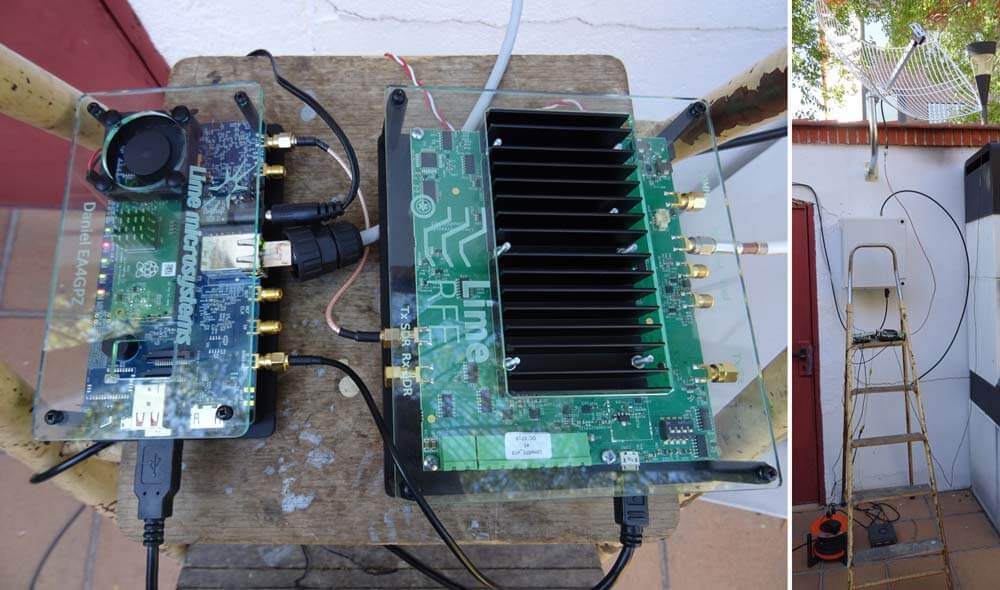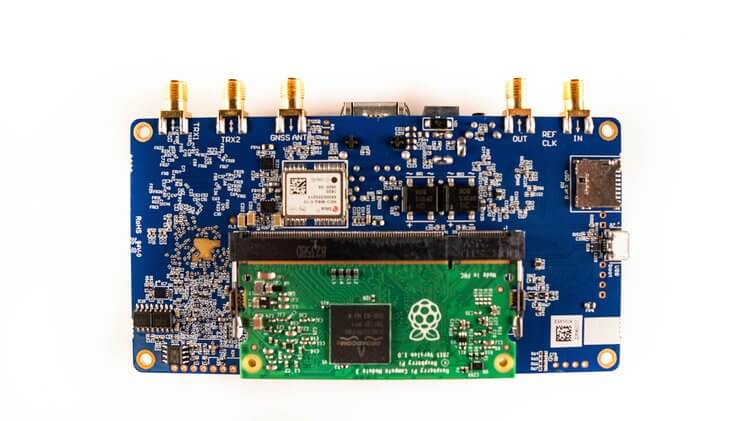Uplinking to QO-100 with a LimeNET Micro and LimeRFE
The LimeNet Micro is a is a $329 board that combines a Raspberry Pi 3 (compute module) together with a LimeSDR radio. The LimeRFE is an amplifier and filter board accessory designed to be used with LimeSDR units. When a LimeNET Micro and LimeRFE are used together, it is possible to create a transmit capable radio system that can be used for amateur radio.
Daniel Estévez has recently been doing several experiments with the LimeRFE, and this time he's managed to create an uplink capable ground station for the QO-100 amateur radio geostationary satellite. The LimeRFE can output 1W at 2.4 GHz and Daniel writes that with a low cost 2.4 GHz WiFi parabolic grid antenna this is more than enough power to work QO-100.
In terms of software, Daniel is using a Python script that communicates with the Limesuite API for PTT control. For transmitting IQ data generated by GNU Radio he uses limesdr_send. So far he's been able to successfully test a CW beacon, SSB voice and waterfall text generated by gr-paint.

